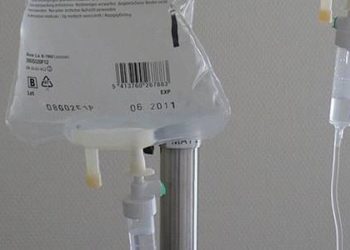POT1-mediated long telomere syndrome is associated with familial clonal hematopoiesis
1. In this retrospective study, carriers with mutations in the gene encoding the protection of telomeres 1 protein (POT1) were found to have elongated telomeres compared to non-carrier relatives.
2. POT1 gene mutations were associated with a predisposition to a familial clonal hematopoiesis syndrome, increasing the risk of several neoplasms.
Evidence Rating Level: 2 (Good)
Study Rundown: Telomere shortening is an intrinsic regulatory process to limit cell division, leading to senescence or apoptosis to prevent abnormal proliferation. POT1 is a protein that protects telomeres and increases telomerase activity to lengthen telomeres and prolong cell line viability. Heterozygous POT1 mutations have been associated with chronic lymphocytic leukemia (CLL) and found in families with isolated cancers. However, the mechanistic role of POT1 mutations in diseases is poorly understood. The current study examined persons carrying heterozygous loss-of-function POT1 mutations and their non-carrier relatives. POT1 mutation carriers had elongated telomeres and had various benign and malignant neoplasms affecting epithelial, mesenchymal, and neuronal tissues. They also had higher rates of lymphoma, myeloid cancers, and clonal hematopoiesis. These mutations showed autosomal dominant inheritance and anticipation. The major limitation of this study was the small sample size limiting applicability to the general population. This study demonstrated telomere elongation and extended cellular lifespan as a novel genetic driver of inheritable predisposition to cancers distinct from the classical mutations affecting tumor-suppressor proteins and oncoproteins.
Click here to read the study in NEJM
In-Depth [retrospective cohort]: The present study recruited 17 individuals with heterozygous POT1 mutations from five families, alongside 21 non-carrier relatives, to explore the clinical and molecular characteristics of age-related telomere changes and cancer. The primary objectives were to compare age-adjusted telomere lengths in POT1 mutation carriers with the expected norms and compare them to their non-carrier relatives. Of the 13 POT1 mutation carriers whose telomere length was measured, nine exhibited long telomeres (above the 99th percentile). The mutation carriers also presented diverse benign and malignant neoplasms affecting solid tissues, including melanocyte neoplasms, thyroid tumors, uterine tumors, and carcinomas. Five carriers exhibited high peripheral T-cell clonality and eight had clonal hematopoiesis of indeterminate potential. Conversely, only two non-carrier relatives showed signs of CHIP. Within the carriers’ clones, DNMT3A and JAK2 were the most commonly mutated genes. Seven carriers possessed JAK2 V617F clones, while this mutation was found in only one non-carrier. Examination of genetic pedigrees revealed an autosomal dominant predisposition to clonal hematopoiesis, with its penetrance increasing with age and displaying genetic anticipation across successive generations. Lastly, compared to noncarriers, telomeres of POT1 mutation carriers exhibited a slower rate of shortening with age, as observed two years after enrollment. These findings highlight POT1 mutations as a novel genetic driver of an inheritable cancer syndrome characterized by telomere elongation and extended cellular lifespan.
Image: PD
©2023 2 Minute Medicine, Inc. All rights reserved. No works may be reproduced without expressed written consent from 2 Minute Medicine, Inc. Inquire about licensing here. No article should be construed as medical advice and is not intended as such by the authors or by 2 Minute Medicine, Inc.









